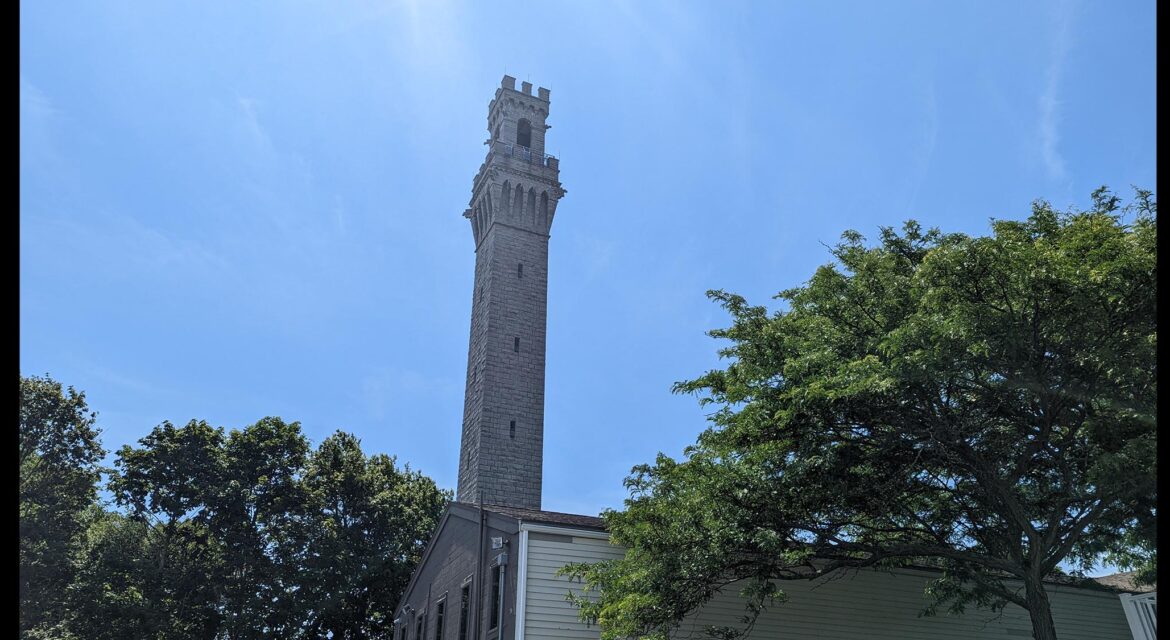 The tallest all-granite structure in the United States, the Pilgrim Monument is one of the most significant monuments in the country. Created to commemorate the Mayflower Pilgrims’ first landing in the New World, this monumentous monument is a testament to the power of landmarks to connect the legacy of an entire country in a way that positively impacts a city, region and nation across the eras.
The tallest all-granite structure in the United States, the Pilgrim Monument is one of the most significant monuments in the country. Created to commemorate the Mayflower Pilgrims’ first landing in the New World, this monumentous monument is a testament to the power of landmarks to connect the legacy of an entire country in a way that positively impacts a city, region and nation across the eras.

Commemorating the First Landfall of the Pilgrims
 Provincetown is where the Mayflower initially landed in 1620, five weeks before continuing on to Plymouth. In what would become Provincetown Harbor, the crew drafted and signed the Mayflower Compact, which established the rule of law for the new land. This transformative development would impact the future of Provincetown and the founding of the United States of America.
Provincetown is where the Mayflower initially landed in 1620, five weeks before continuing on to Plymouth. In what would become Provincetown Harbor, the crew drafted and signed the Mayflower Compact, which established the rule of law for the new land. This transformative development would impact the future of Provincetown and the founding of the United States of America.
Built between 1907 and 1910, the 252-foot-tall Pilgrim Monument originated as part of a grassroots effort by the Cape Cod Pilgrim Memorial Association to commemorate this first landing of the Mayflower Pilgrims at Cape Cod. The winning design of the monument is based on the Torre del Mangia in Italy. President Theodore Roosevelt laid the monument’s cornerstone when construction commenced, and President William H. Taft led a dedication ceremony upon completion.
While it requires climbing 116 steps and 60 ramps to the top, the vantage point from the top of the Pilgrim Monument has been described as one of the best in Cape Cod. Interior stones were donated by cities, towns and organizations from all across the United States. The Provincetown Museum, which resides near the base of the landmark, features exhibits about the Pilgrims, the building of the Monument, maritime history, the early days of modern American theater and much more. It also contains rotating exhibits focused on the area’s cultural and maritime history.
There is an admission charge to the museum and monument but this direct means of revenue is just one of the means of engagement that stakeholders have been able to cultivate for the benefit of the entire community.

Defining the Cape Cod Region
 The Cape Cod Pilgrim Memorial Association is Cape Cod’s oldest not-for-profit organization. The impact that the organization has made and continues to drive is highlighted by the funding of the inclined elevator by private donations, showcasing the strong local support that it has cultivated across the eras for the benefit of the community.
The Cape Cod Pilgrim Memorial Association is Cape Cod’s oldest not-for-profit organization. The impact that the organization has made and continues to drive is highlighted by the funding of the inclined elevator by private donations, showcasing the strong local support that it has cultivated across the eras for the benefit of the community.
For special events, the grounds of the monument provide audiences with views of Provincetown and the harbor. The grounds are available to rent from May through October for formal outdoor weddings, private functions, corporate affairs and casual fundraising events. Local businesses, organizations and community members actively take part in these initiatives to make the Pilgrim Monument and Provincetown Museum an essential cultural landmark.
Visible from anywhere on the north side of the cape on a clear day, the Pilgrim Monument has been mentioned as an ideal spot to explore local and regional history. Countless businesses utilize the icon of the monument as part of their identity, while maps and guides of the city and region are defined by the location of the Pilgrim Monument. All of these benefits showcase how a landmark can create a positive benefit for stakeholders while opening up additional opportunities for others across an entire region.

Visible Across Provincetown and the Eras
 As the first thing that people see when they approach or look across Provincetown, millions of visitors and generations of local residents have been able to engage with the Pilgrim Monument in ways that resonate on multiple levels. The impact that it has enabled can be literally seen across the city, highlighting the multiple ways that it has positively affected audiences in the present and will continue to make a difference for both residents and visitors in the future.
As the first thing that people see when they approach or look across Provincetown, millions of visitors and generations of local residents have been able to engage with the Pilgrim Monument in ways that resonate on multiple levels. The impact that it has enabled can be literally seen across the city, highlighting the multiple ways that it has positively affected audiences in the present and will continue to make a difference for both residents and visitors in the future.

